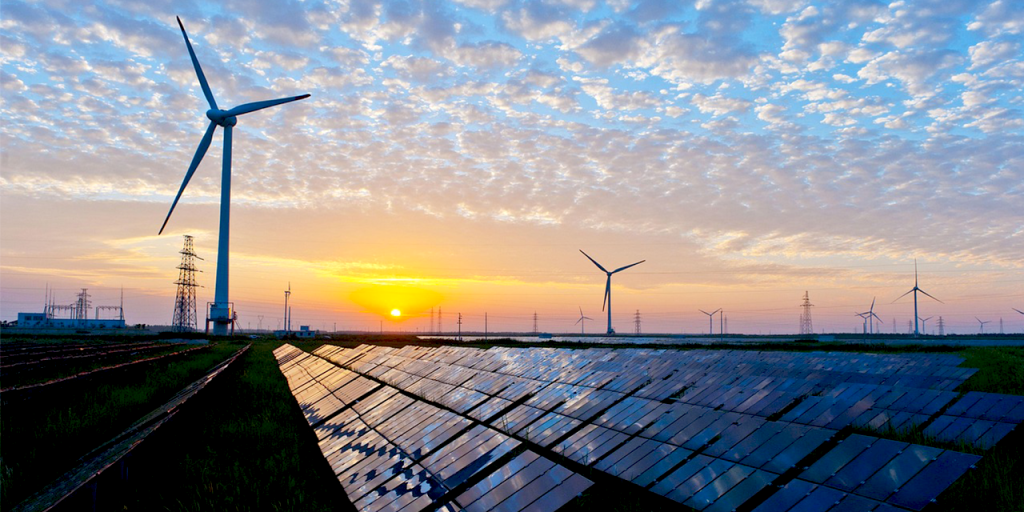The key solution to avoid the worst impact of climate change and fulfil the Paris Agreement calling for keeping global warming below 1.5°C is a radical transition from fossil fuels to renewable energy. Fossil fuels are regarded as the largest contributor to global climate change, responsible for over 75% of global greenhouse gas emissions (United Nations 2023a).
Renewables can provide energy security and resilience by limiting the geopolitical risks of fossil fuels supply. At the same time, due to technological development and falling prices of relevant technologies, renewable energy can enable a more inclusive, fair, and climate-safe global economy. (IRENA 2022, 5.) According to United Nations, the price of renewables is more affordable in most countries and generate three times more jobs in comparison with fossil fuels. Between 2010 and 2020, the electricity cost from renewables rapidly decreased; by 85% in case of solar power, by 56% for onshore and 48% for offshore wind energy. (United Nations 2023b.)

Renewables – Global Level
In 2022, Renewables generated 40% share of total power capacity worldwide. According to the International Renewable Energy Agency (IRENA) and her Renewable Capacity Statistics 2023 report, nearly 295GW new installed renewable power capacity was added globally, out of which 192 GW solar and 75 GW wind energy additions (Table 1). (Irena 2023a, Foreword)
In the last decade, the installation of renewables increased by 130%, in comparison with non-renewables with a slow progress of 24% only. Although the deployment of renewables is accelerating in the world, the installation progress must speed up three time more in order to meet the Paris Agreement. (IRENA 2022, 42.)
In average, 1000GW of new renewables capacity needs to be added annually in the world by 2030. As the main structural hindrances are seen the missing infrastructure, enabling policies and regulations, and skills and capacities. (IRENA 2023b.)

Renewables – EU level
In March 2023, the EU provisionally agreed on accelerating the deployment of renewables by increasing the 2030 renewables target from 32% to at least 42.5% but aiming for 45% in final energy consumption (European Commission 2023).
In 2022, renewables accounted almost 40% of total electricity generation in the EU. Wind and solar power alone generated over than a fifth (22%) of EU electricity, overtaking gas (16%) for the first time in history. (Ellerbeck 2023.) Luxembourg achieved 86% of electricity from renewables, scoring the biggest share in the EU. Finland with its 54,6% share is one of the nine EU countries with most of the electricity generated from renewables. (van Halm 2023.)
The year 2022 was the record year in terms of the EU energy transition by deploying about 55 GW of new renewable energy capacity (Table 1), out of which, 16 GW was wind energy (8,6% growth from 2021) and 41 GW solar power generation capacity (24% growth from 2021) (Enerdata 2023; Ellerbeck 2023). For the first time, in the Netherlands and Greece, produced solar power surmounted coal production. Greece is forecasted to hit her 2030 solar capacity target already by the end of 2023. (Ellerbeck 2023.)
Writer
Katerina Medkova works as an RDI specialist at LAB University of Applied Sciences and acts as a Project & Communication Manager in the RESINDUSTRY project. The RESINDUSTRY – Policies for Renewable Energy Sources in industry -project is co-funded by the Interreg Europe.

References
Ellerbeck, S. 2023. Wind and solar power generated more electricity in the EU last year than gas did. Here’s how. World Economic Forum. Cited 7 Jul 2023. Available at https://www.weforum.org/agenda/2023/01/renewable-energy-electricity-record-europe/
Enerdata. 2023. Europe built 19 GW of new wind capacity in 2022, including 16 GW in the EU. Cited 11 Jul 2023. Available at https://www.enerdata.net/publications/daily-energy-news/europe-built-19-gw-new-wind-capacity-2022-including-16-gw-eu.html
European Commission. 2023. European Green Deal: EU agrees stronger legislation to accelerate the rollout of renewable energy. Press Release. 30 Mar 2023. Cited 11 Jul 2023. Available at https://ec.europa.eu/commission/presscorner/detail/en/IP_23_2061
IRENA. 2022. World Energy Transitions Outlook 2022: 1.5°C Pathway, International Renewable Energy Agency. Abu Dhabi: IRENA. Cited 11 Jul 2023. Available at https://www.irena.org/publications/2022/mar/world-energy-transitions-outlook-2022
IRENA. 2023a. Renewable Capacity Statistics 2023. International Renewable Energy Agency. Abu Dhabi: IRENA. Cited 11 Jul 2023. Available at https://www.irena.org/Publications/2023/Mar/Renewable-capacity-statistics-2023
IRENA. 2023b. Annual Renewable Power Must Triple by 2030. International Renewable Energy Agency. Press release. 22 Jun 2023. Cited 11 Jul 2023. Available at https://www.irena.org/News/pressreleases/2023/Jun/Annual-Renewable-Power-Must-Triple-by-2030#:~:text=More%20ambitious%20renewable%20energy%20targets,renewables%20in%20end%2Duse%20sectors.
Kenueone. 2016. Electricity, Sun, Wind. Pixabay. Cited 11 Jul 2023. Available at https://pixabay.com/photos/electricity-sun-wind-1330214/
United Nations. 2023a. Renewable energy – powering a safer future. Climate Actions. Cited 11 Jul 2023. Available at https://www.un.org/en/climatechange/raising-ambition/renewable-energy
United Nations. 2023b. What is renewable energy? Climate Actions. Cited 11 Jul 2023. Available at https://www.un.org/en/climatechange/what-is-renewable-energy#:~:text=Renewable%20energy%20is%20energy%20derived,that%20are%20constantly%20being%20replenished.
van Halm, I. 2023. Europe: Renewables in 2022 in five charts – and what to expect in 2023. Energy Monitor. Cited 11 Jul 2023. Available at https://www.energymonitor.ai/tech/renewables/europe-renewables-in-2022-in-five-charts-and-what-to-expect-in-2023/
Links
Link 1. Interreg Europe. 2023. Project Summary. RESINDUSTRY. Cited 11 Jul 2023. Available at https://projects2014-2020.interregeurope.eu/resindustry/




